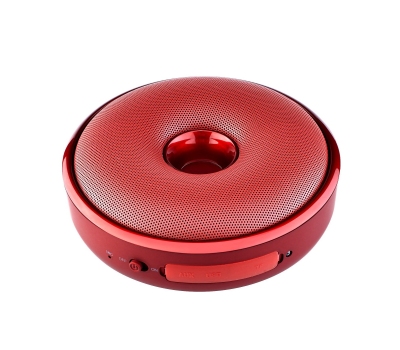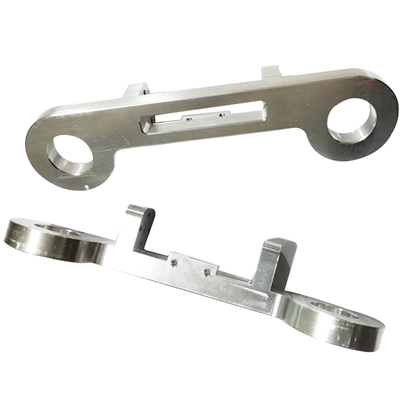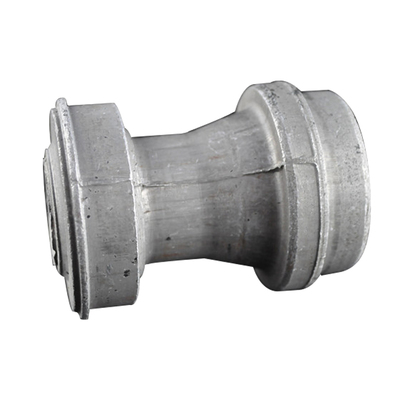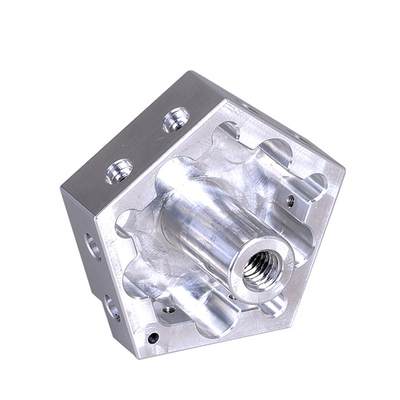Casting Solutions Comparison: Die Casting vs. Sand Casting
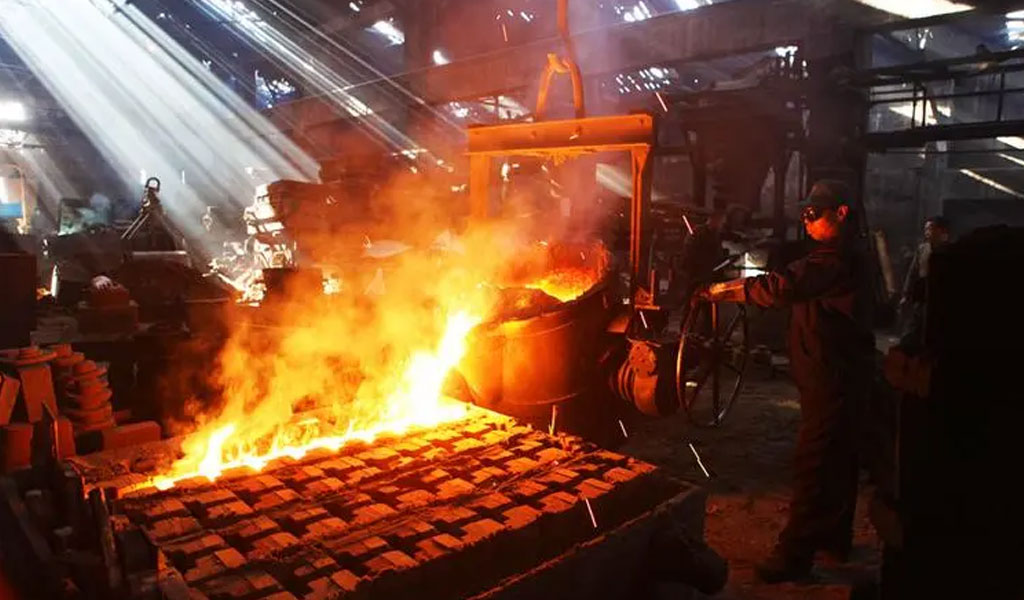
Casting is a manufacturing process in which a liquid material is poured into a mold that contains a hollow cavity of the desired shape, and then allowed to solidify. The solidified part, known as a casting, is then ejected or broken out of the mold to complete the process. Casting is widely used for producing complex shapes that would be difficult or uneconomical to make by other methods. Two common types of casting processes are die casting and sand casting. Each method has its own advantages, limitations, and applications, making them suitable for different types of projects and industries.
Overview of Die Casting
Die casting is a metal casting process that is characterized by forcing molten metal under high pressure into a mold cavity. The mold cavity is created using two hardened tool steel dies which have been casting and machined into shape and work similarly to an injection mold during the process. Most die castings are made from non-ferrous metals, specifically zinc, copper, aluminum, magnesium, lead, pewter, and tin-based alloys. Depending on the type of metal being cast, a hot- or cold-chamber machine is used.
Types of Die Casting
There are two main types of die casting processes: hot-chamber and cold-chamber die casting.
-
Hot-Chamber Die Casting: In the hot-chamber process, also known as gooseneck casting, the pressure chamber is connected to the die cavity and is immersed permanently in the molten metal. A plunger or piston forces the molten metal into the die cavity. This method is used for metals with low melting points such as zinc, magnesium, and lead alloys.
-
Cold-Chamber Die Casting: In the cold-chamber process, the molten metal is ladled into the cold chamber for each cycle. The plunger pushes the metal into the die cavity. This method is used for metals with high melting points such as aluminum, brass, and copper.
Advantages of Die Casting
- High Production Rates: Die casting is capable of producing large quantities of castings in a relatively short period of time. This makes it highly efficient for mass production.
- Dimensional Accuracy and Stability: Die casting produces parts with close tolerances and good surface finishes, often eliminating the need for additional machining.
- Strength and Weight: Die cast parts are stronger than plastic injection moldings having the same dimensions. Thin-wall castings are lighter and stronger than those possible with other casting methods.
- Multiple Finishing Techniques: Die cast parts can be produced with smooth or textured surfaces, and they can be easily plated or finished with minimal surface preparation.
- Complex Shapes: Die casting can produce complex shapes with intricate details and thin walls that would be difficult to achieve with other casting methods.
Limitations of Die Casting
- High Initial Cost: The initial cost for creating the dies and setting up the machinery is relatively high, making die casting less economical for small production runs.
- Limited to High Fluidity Metals: Die casting is generally limited to metals that have low melting points and high fluidity.
- Size Limitations: The size of the casting is limited by the size of the die casting machine.
Overview of Sand Casting
Sand casting is a metal casting process characterized by using sand as the mold material. It is one of the oldest and most widely used casting methods. The sand mold is created by packing sand around a pattern, which is then removed to leave a cavity in the sand. Molten metal is poured into this cavity, where it solidifies to form the casting.
Types of Sand Casting
- Green Sand Casting: This involves the use of moist sand, which is capable of retaining its shape when compressed. Green sand molds are the most common and are used for a wide range of metals and alloys.
- Dry Sand Casting: In this process, the sand mold is baked in an oven to remove moisture before the metal is poured. This results in better dimensional accuracy and surface finish compared to green sand casting.
- Resin Sand Casting: This method uses sand mixed with a resin binder to create a mold that has high strength and rigidity. Resin sand casting is often used for large or complex parts that require a high level of precision.
Advantages of Sand Casting
- Versatility: Sand casting is capable of producing a wide range of sizes and shapes, from small intricate parts to large components weighing several tons.
- Low Cost: The cost of sand casting is generally lower than die casting, especially for small production runs, because the molds can be made relatively quickly and inexpensively.
- Material Variety: Sand casting can be used with almost any metal or alloy, making it a highly versatile process.
- Short Lead Times: The simplicity of the sand casting process allows for quick turnaround times from design to production.
Limitations of Sand Casting
- Surface Finish: Sand castings typically have a rougher surface finish compared to die castings, which may require additional machining or finishing.
- Dimensional Accuracy: Sand casting is less precise than die casting, often requiring secondary operations to achieve the desired tolerances.
- Labor Intensive: The process of making sand molds can be labor-intensive, particularly for large or complex parts.
- Lower Strength: Sand cast parts are generally not as strong as die cast parts due to the porosity and lower density of the material.
Comparative Analysis
Cost
- Initial Investment: Die casting has a higher initial investment due to the cost of making the dies and setting up the machinery. Sand casting has a lower initial cost as the sand molds can be made quickly and cheaply.
- Production Cost: For high volume production, die casting is more economical due to its high efficiency and speed. Sand casting becomes less cost-effective for large quantities because it is more labor-intensive and time-consuming.
- Total Cost: The total cost of production will depend on the volume and complexity of the parts. For small production runs and simple parts, sand casting is generally more cost-effective. For large production runs and complex parts, die casting is more economical.
Production Volume
- High Volume: Die casting is well-suited for high volume production due to its ability to produce a large number of parts quickly and with consistent quality.
- Low Volume: Sand casting is more suitable for low volume production because it does not require expensive dies and can be set up quickly.
Design and Complexity
- Complex Shapes: Die casting can produce highly complex shapes with thin walls and intricate details, making it ideal for precision components.
- Simple to Moderately Complex Shapes: Sand casting is more flexible in terms of the size and shape of the parts it can produce, but it is better suited for simple to moderately complex shapes due to the limitations of the sand mold.
Material Selection
- High Fluidity Metals: Die casting is limited to metals with high fluidity and low melting points, such as aluminum, zinc, and magnesium alloys.
- Wide Range of Metals: Sand casting can be used with almost any metal or alloy, including ferrous and non-ferrous metals, making it highly versatile.
Surface Finish and Tolerances
- High Precision: Die casting produces parts with excellent surface finish and tight tolerances, often eliminating the need for additional machining.
- Moderate Precision: Sand casting typically results in a rougher surface finish and lower dimensional accuracy, which may require secondary operations to achieve the desired specifications.
Lead Time
- Short Lead Time for High Volume: Die casting can produce a large number of parts in a short period of time once the dies are made and the machinery is set up.
- Short Lead Time for Prototypes and Low Volume: Sand casting can be set up quickly for prototype production and low volume runs, making it ideal for rapid development and testing.
Applications
Die Casting Applications
Die casting is widely used in various industries, including automotive, aerospace, electronics, and consumer goods. Common applications include:
- Automotive Parts: Engine blocks, transmission housings, and other critical components that require high strength and precision.
- Aerospace Components: Lightweight and strong parts for aircraft and spacecraft.
- Electronics: Housings and components for electronic devices that require intricate shapes and high thermal conductivity.
- Consumer Goods: High-quality, durable parts for appliances, tools, and other consumer products.
Sand Casting Applications
Sand casting is used in a wide range of industries, including automotive, aerospace, machinery, and construction. Common applications include:
- Automotive Components: Engine blocks, cylinder heads, and other large parts that require high strength and durability.
- Aerospace Parts: Structural components and complex shapes that require high precision and strength.
- Machinery and Equipment: Large and heavy parts for industrial machinery, pumps, and valves.
- Construction: Structural components, frames, and supports for buildings and infrastructure.
Environmental Impact
Die Casting
- Energy Consumption: Die casting is an energy-intensive process, particularly for cold-chamber machines that require molten metal to be ladled into the chamber.
- Waste Generation: The process generates waste material in the form of scrap metal, used die lubricants, and spent die casting dies. However, most of the scrap metal can be recycled.
- Emissions: The process can produce emissions, including volatile organic compounds (VOCs) from die lubricants and greenhouse gases from energy consumption.
Sand Casting
- Energy Consumption: Sand casting generally consumes less energy compared to die casting, but the energy consumption can vary depending on the size and complexity of the parts.
- Waste Generation: Sand casting generates waste in the form of used sand, which can be difficult to dispose of due to its volume and potential for contamination. However, some of the sand can be recycled or reused.
- Emissions: The process can produce emissions, including particulate matter from sand handling and fumes from molten metal pouring.
Conclusion
Die casting and sand casting are both valuable manufacturing processes with their own unique advantages and limitations. Die casting is ideal for high volume production of complex, high-precision parts with excellent surface finish and dimensional accuracy. It is widely used in industries that require high strength and lightweight components, such as automotive and aerospace. However, the high initial cost and limitations on material selection make it less suitable for small production runs and metals with high melting points.
Sand casting, on the other hand, offers greater flexibility in terms of size, shape, and material selection. It is a versatile process that can produce a wide range of parts, from small intricate components to large heavy structures. Sand casting is more cost-effective for low volume production and prototyping, but it typically results in a rougher surface finish and lower dimensional accuracy compared to die casting.
The choice between die casting and sand casting ultimately depends on the specific requirements of the project, including production volume, material selection, part complexity, and budget. By understanding the strengths and weaknesses of each process, manufacturers can select the most appropriate casting method to meet their needs.
Reprint Statement: If there are no special instructions, all articles on this site are original. Please indicate the source for reprinting:https://www.cncmachiningptj.com/,thanks!
 3, 4 and 5-axis precision CNC machining services for aluminum machining, beryllium, carbon steel, magnesium, titanium machining, Inconel, platinum, superalloy, acetal, polycarbonate, fiberglass, graphite and wood. Capable of machining parts up to 98 in. turning dia. and +/-0.001 in. straightness tolerance. Processes include milling, turning, drilling, boring, threading, tapping, forming, knurling, counterboring, countersinking, reaming and laser cutting. Secondary services such as assembly, centerless grinding, heat treating, plating and welding. Prototype and low to high volume production offered with maximum 50,000 units. Suitable for fluid power, pneumatics, hydraulics and valve applications. Serves the aerospace, aircraft, military, medical and defense industries.PTJ will strategize with you to provide the most cost-effective services to help you reach your target,Welcome to Contact us ( sales@pintejin.com ) directly for your new project.
3, 4 and 5-axis precision CNC machining services for aluminum machining, beryllium, carbon steel, magnesium, titanium machining, Inconel, platinum, superalloy, acetal, polycarbonate, fiberglass, graphite and wood. Capable of machining parts up to 98 in. turning dia. and +/-0.001 in. straightness tolerance. Processes include milling, turning, drilling, boring, threading, tapping, forming, knurling, counterboring, countersinking, reaming and laser cutting. Secondary services such as assembly, centerless grinding, heat treating, plating and welding. Prototype and low to high volume production offered with maximum 50,000 units. Suitable for fluid power, pneumatics, hydraulics and valve applications. Serves the aerospace, aircraft, military, medical and defense industries.PTJ will strategize with you to provide the most cost-effective services to help you reach your target,Welcome to Contact us ( sales@pintejin.com ) directly for your new project.

- 5 Axis Machining
- Cnc Milling
- Cnc Turning
- Machining Industries
- Machining Process
- Surface Treatment
- Metal Machining
- Plastic Machining
- Powder Metallurgy Mold
- Die Casting
- Parts Gallery
- Auto Metal Parts
- Machinery Parts
- LED Heatsink
- Building Parts
- Mobile Parts
- Medical Parts
- Electronic Parts
- Tailored Machining
- Bicycle Parts
- Aluminum Machining
- Titanium Machining
- Stainless Steel Machining
- Copper Machining
- Brass Machining
- Super Alloy Machining
- Peek Machining
- UHMW Machining
- Unilate Machining
- PA6 Machining
- PPS Machining
- Teflon Machining
- Inconel Machining
- Tool Steel Machining
- More Material

